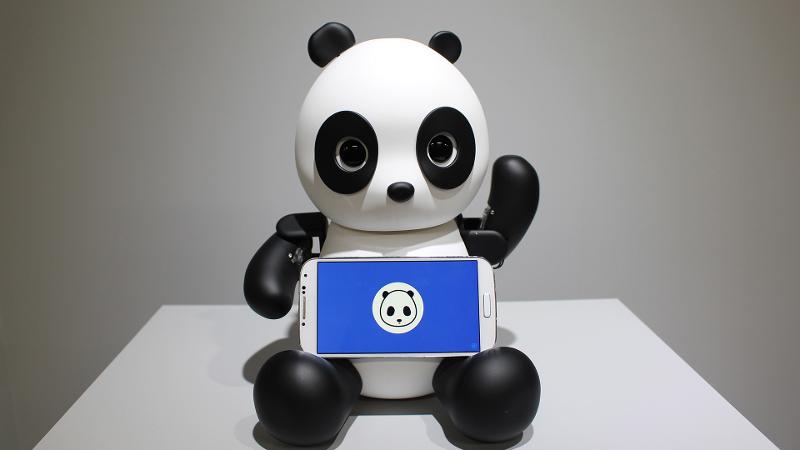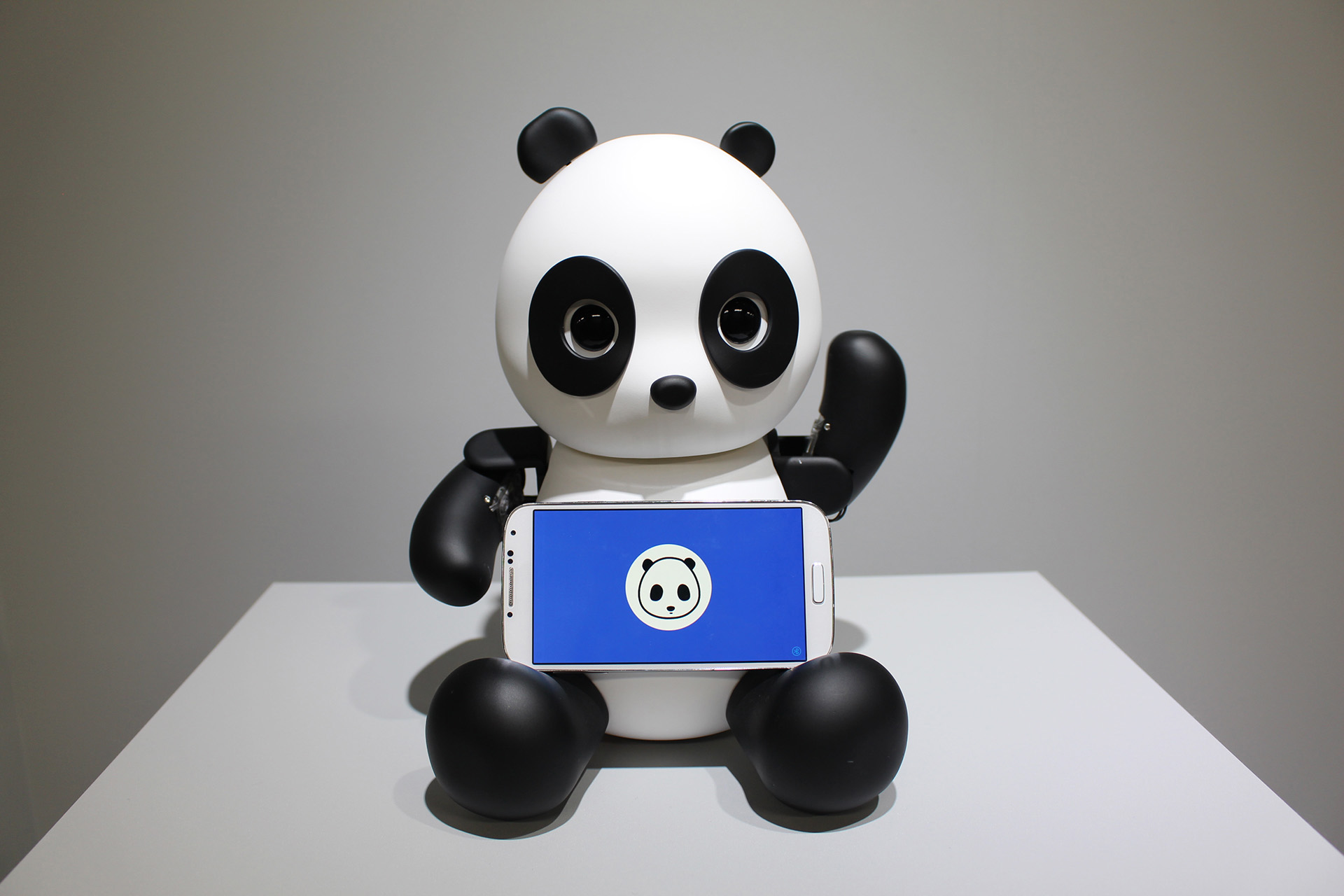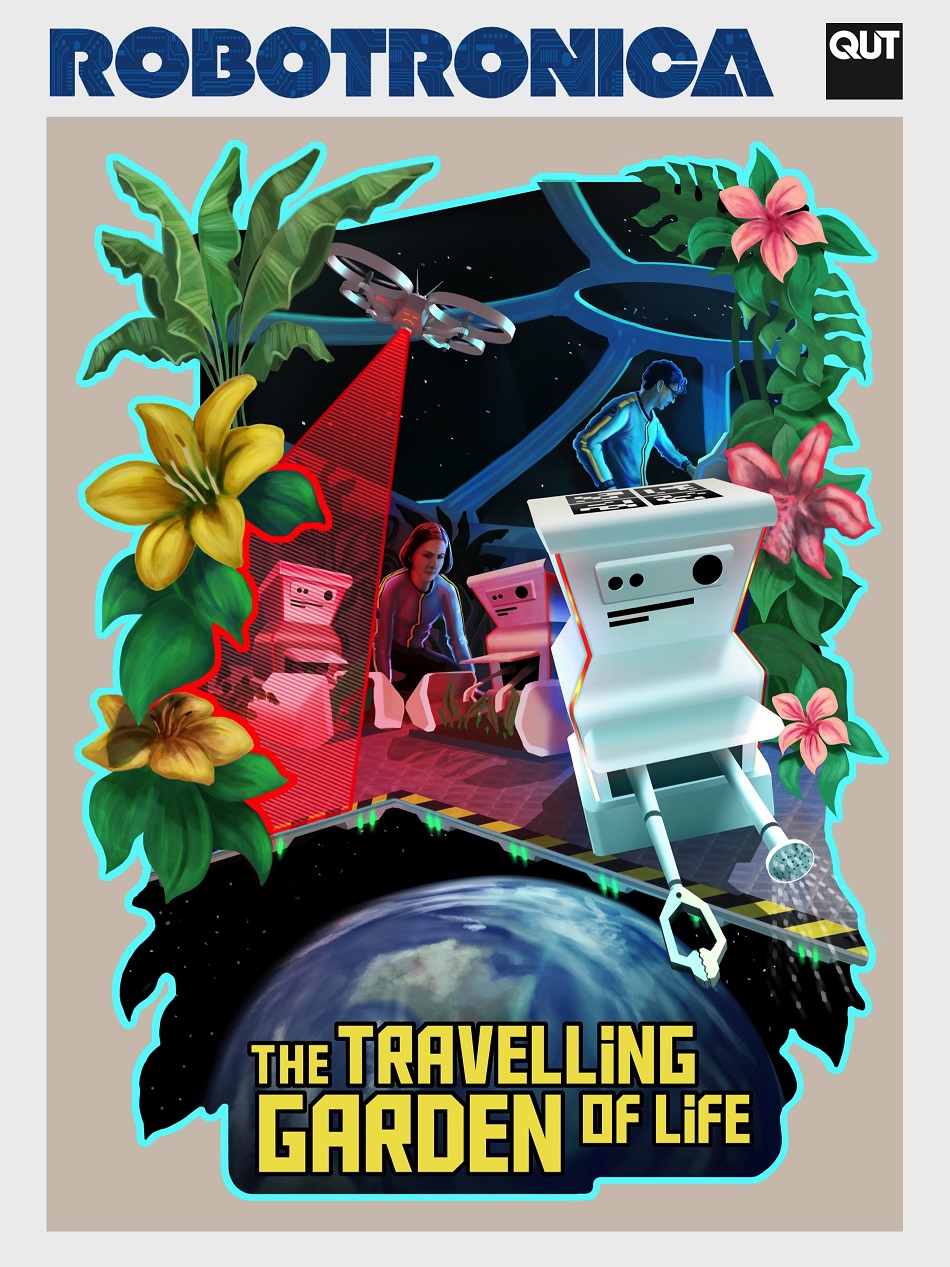
When robotics are discussed, art doesn’t automatically spring to mind but QUT’s free Robotronica spectacular on 20 August will comprehensively demonstrate how essential creative practice is to artificial intelligence.
The dynamic schedule of public events includes two exciting exhibitions at the QUT Art Museum which explore the relationship between humans, creativity and the machine.
Why future still needs us: AI and humanity is presented by Art Center Nabi in Seoul, Korea. Founder Soh Yeong Roh has long explored the potential for emotional connection with robots – questions such as how can you make a robot more like your dog?

The exhibition presents a not-too-distant future in which machines and humans actively collaborate; a time in which the human brain is substituted with intelligent machines.
One of the works on show is Robo-Panda, created by Nabi E.I Lab and which expresses emotions including anger, sadness, fear, disgust and joy in response to fairy stories.
“Corporations such as Google, Microsoft and IBM are competing with each other to release software with an open architecture. This is because artificial intelligence cannot develop without cooperating with diverse fields since it is technology that is so tied to our everyday life,” said Soh Yeong.
“Media artists often use technology in ways that engineers have never thought about.”
The artists in the exhibition include Maurice Benayoun, a French pioneer new-media artist and theorist based in Paris and Hong Kong, who will give a free public lecture - Artificial Intelligence, All too Human – at QUT’s Creative Industries precinct on Friday August 18.
Artists from the Nabi E.I Lab will also host a working Machine learning for creatives from 4pm-7pm at the QUT Art Museum on Monday 21 August.
The other Robotronica-related exhibition opening at the QUT Art Museum on 20 August is Machination which harks back to the 1950s when robots on wheels were all the rage.
Presented by Cake Industries, viewers can expect darkly humorous and provocatively satirical performative mechatronic sculptures constructing anachronistic narratives to reveal the struggles and absurdities of modern life.
Included are works from Cake Industries' recently completed Voyages project based on the history, essence and cultural impact of historic amusement park Luna Park, Melbourne.
The QUT Art Museum exhibitions are a key component of Robotronica and, according to Dr Jared Donovan from QUT’s School of Design, highlight the importance of art being included in STEM education.
“Artificial intelligence is already producing pictures, composing music, writing novels and even producing movies,” said Dr Donovan who recently co-wrote robot sculpture for The Conversation.

“AI can learn and think by repeating the process of analysis, classification, reasoning, prediction, and regression. Conversely, human artists have the unique ability of making AI more palatable to humans; more lovable even.
“The ties between robots and the creative industries are increasingly evident and it’s a field in which some of the most exciting developments in the field are going on.”
Dr Donovan cited the work of Sarah Jane Pell, Australia’s first artist-turned-astronaut who is giving a free QUT Creative Lab talk on 11 August as a teaser for Robotronica. An Australia Council Fellow and qualified simulation Astronaut and Aquanaut, she also takes art into expeditions and space analogues.
Other arts-related Robotronica events scheduled for 20 August include:
1:1 – the world premiere of a new performance work about the relationship between a human and a robot camera, incorporating elements of dance, theatre and new technology.
Artbots - visit the Registrar's Garden behind QUT Art Museum to meet a drawing robot who will work collaboratively with you to create your own artwork.
Echo - an immersive installation by Georgie Pinn which explores empathy and connection through face swapping and storytelling.
Electric Puppet - families can design their own 2D digital robots, from a library of body part images, and animate them. Using real-time motion tracking, the puppets' movements are driven by the actions of the participant, bringing them to life.
The Travelling Garden of Life – a performance exploring a not-so-distant future in which the earth is almost uninhabitable, plants are withering and a band of concerned scientists have created a space station that orbits the Earth containing a seed bank and a preservation garden, maintained by robots.
Crate Expectations - a roaming interactive robotic sculpture presented by Cake Industries using vintage packing crates, appearing as an unexpected abstract cabinet of curiosities in public places.
Media contact:
Amanda Weaver, QUT Media, 07 3138 9449, amanda.weaver@qut.edu.au
After hours: Rose Trapnell, 0407 585 901, media@qut.edu.au




